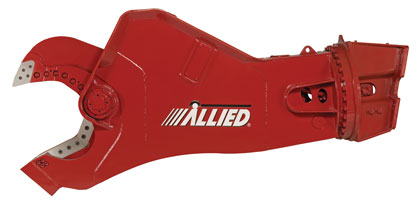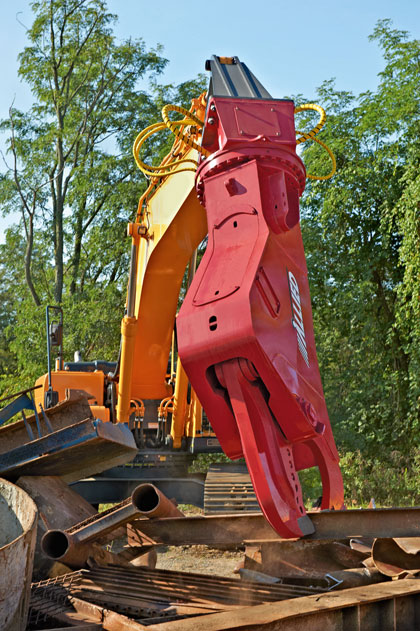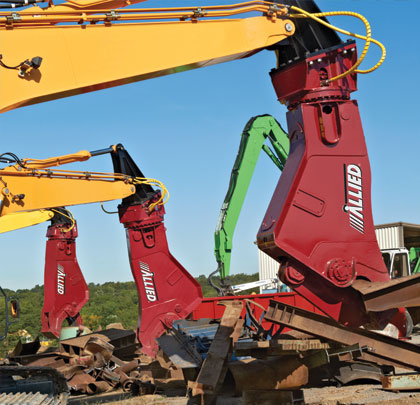When it comes to acquiring a mobile shear for a specific application, one of the most common errors purchasers make is looking strictly at the invoice cost or “purchasing cost” and not at the overall operation and ownership cost (OOC) of a unit. In today’s tight economic times, you are doing your company a disservice by not conserving money where it can be better spent in the company. Being more efficient in the process that you already have is what is required to stay profitable in this uncertain economic and tight budgetary environment.
Analyze your business operation and understand exactly what your costs are when it comes to profitability versus operational costs. This is the starting point for success in any business. Most recyclers or demolition contractors get stuck in the rut of buy low, sell high, and that is a good day of business, but that only goes so far. Understanding fixed and, most importantly, variable costs for processing material is where you can leave your competitors behind.

APPLICATIONS
Hydraulic mobile steel processing shears can be found worldwide on demolition jobsites, recycling yards, and marine applications, such as underwater demolition. Scrap/recycling centers, bridge and road contractors, and demolition contractors are some of the other sectors where this equipment can be found. Applications can range from auto recycling and railcar dismantling to bridge deck removal and building demolition in stadiums and industrial plants.
SIZING
Each job or processing application has its own set of unique requirements and considerations when it comes to using a mobile shear. In general, the best way to start is to look at what it is you are cutting and how the final product needs to be processed. In most applications, the 80/20 rule can be applied for steel processing in both recycling yards and steel dominant demolition projects, such as bridges and steel framed block buildings. This works by matching a mobile shear that is capable of cutting 80 percent of the material that needs to be processed and allowing the remaining 20 percent to be processed in a different way, instead of looking at the largest material that is needed to be cut, which may only be a fraction of the processing work. In the case of recycling yards, the above method works very well, but with demolition projects, there can be more that needs to be considered. For example, is the tool going to just process the material or will it be a primary take-down machine or both? Is it required to have the tool mounted at the end of the excavator stick or mounted at the end of the boom?

BASE MACHINE CONSIDERATIONS
The hydraulic excavator or the base machine, as it’s sometimes called, can easily be sized after the above has been established. With the proper tool that has been chosen, your shear manufacturer can guide you into the correct carrier size and configuration that matches your needs.
OWNERSHIP AND OPERATIONAL COSTS
Looking at the dollar and sense of the purchase and life operation of a shear machine is something that needs to be done before the actual purchase is made. In the case of recycling yard operations, looking at production and current operational overhead costs are all factors into the profitability of the machine package purchase over time. A typical ROI window for an asset acquisition of this sort is between 18 to 24 months. This number can be acquired by the following formula:
ROI = Net Machine Investment / *Delta OC Savings per year
Where * operational cost per day per ton material processed (current method) minus operational cost per day per ton material processed (mobile shear method).
New methods and processes are the key to operational profitability and company survivability. If your company has embraced this philosophy, you are probably one of the market survivors and candidates for market leadership in the future. ■
About the Author Salvatore LaCorte is the scrap/demolition products sales manager with Allied Construction Products, LLC based in Cleveland, Ohio. For more information, visit www.alliedcp.com.
Modern Contractor Solutions, August 2014
Did you enjoy this article?
Subscribe to the FREE Digital Edition of Modern Contractor Solutions Magazine!



